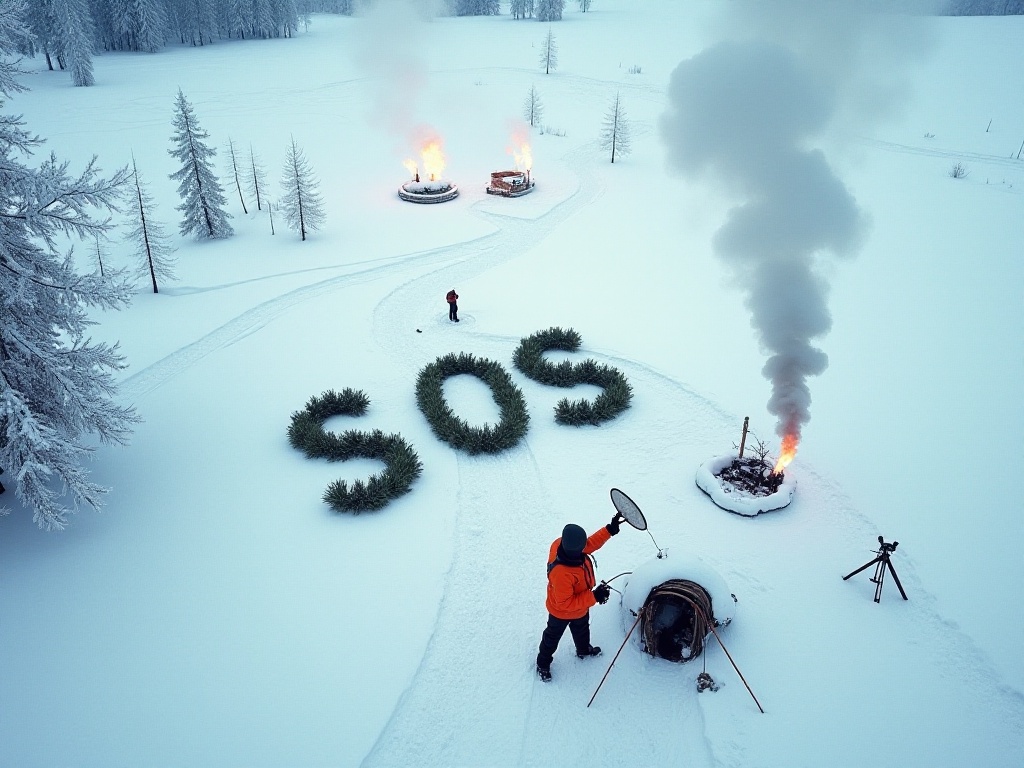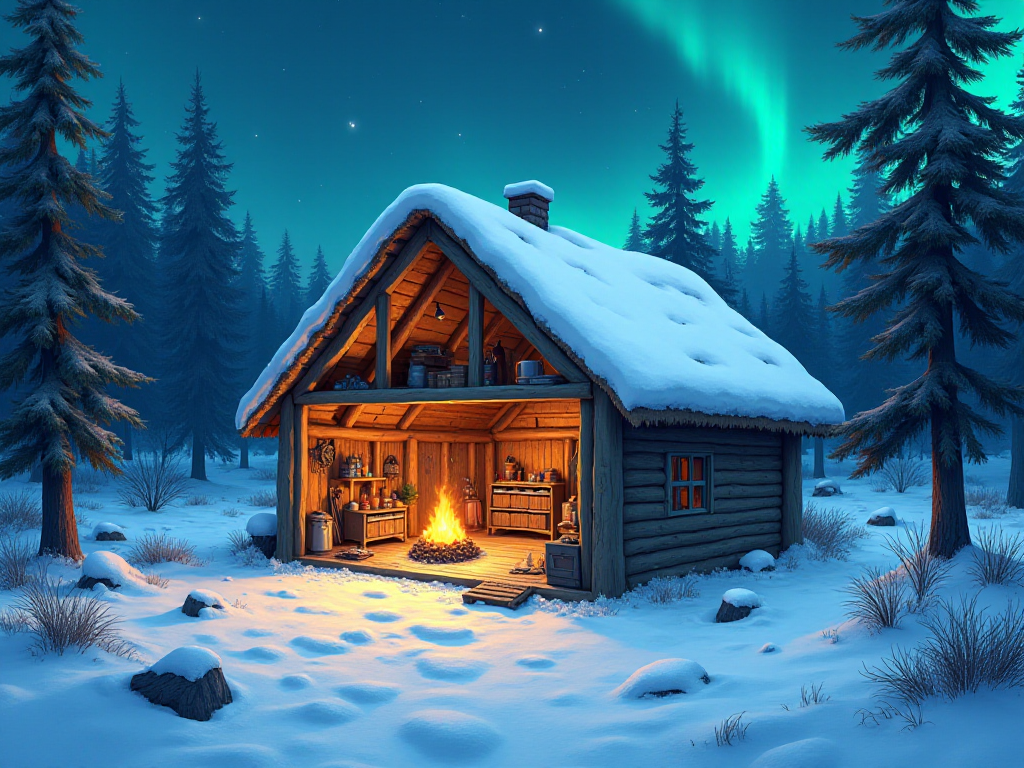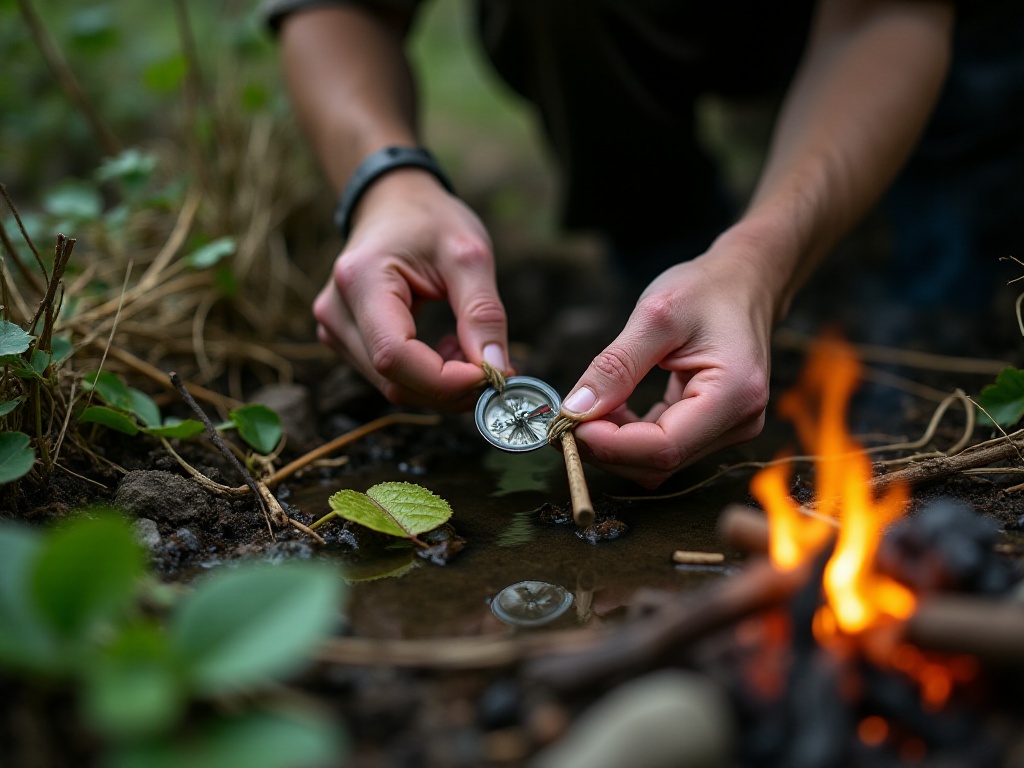Introduction
Hi everyone, I'm Wu, a post-95s outdoor enthusiast who's crazy about outdoor activities. As someone who frequently ventures into the wild, I deeply understand the importance of wilderness survival skills. Last summer, I got lost in a remote mountain area, which gave me a deeper understanding of wilderness survival. That experience was terrifying and nearly cost me my life. Today I want to share my wilderness survival experience, hoping it can help everyone return home safely when encountering dangers in the wild.
Mental Preparation
To be honest, when facing danger in the wilderness, the most important thing isn't how much high-tech equipment you have, but whether you can stay calm. I'll never forget that feeling of panic after getting lost, when my mind went blank, as if someone had hit the pause button. I was running around like a headless fly, only getting myself more lost. Finally, I sat down on a large rock and forced myself to take deep breaths, which helped me regain my rationality.
Here's a frightening statistic: 90% of wilderness accidents happen because people panic. So the first step when facing danger is to stabilize yourself. I now highly recommend the 4-7-8 breathing technique I learned from my yoga teacher: inhale for 4 counts, hold for 7 counts, then exhale for 8 counts. It might feel uncomfortable at first, but after a few repetitions, it really helps you calm down.
In the wilderness, fear often comes from the unknown. When you don't know where you are or what will happen next, your brain automatically starts imagining scary scenarios. However, if you can maintain a clear mind, many seemingly frightening situations can be resolved.
Now before each trip, I do mental preparation: I imagine the worst possible scenarios and think of solutions in advance. This way, when real problems arise, I won't panic too much. It's like studying game strategies before playing - understanding the potential "bosses" you might face helps you handle them calmly.
Preparation
Talking about preparation, it's truly a major undertaking. As the saying goes, good tools are prerequisite to the successful execution of a job. Thorough preparation before outdoor activities can greatly increase your survival chances. Red Cross data shows that 80% of wilderness emergencies occur due to insufficient preparation.
First, make sure your family or friends know where you're going. I know many young people don't like telling their parents everything, thinking it's too fussy. But trust me, this is extremely important. You must clearly communicate your specific itinerary, including which route you plan to take, when you expect to return, where you'll park your car - all this information should be shared with them.
I've developed a good habit now of sending a super detailed itinerary in my family group chat, even including route screenshots. This habit proved to be a lifesaver when I got lost. Because my family knew my specific location, they could call for help in time. I remember when the rescue team reached me, they said if my family couldn't accurately describe my approximate location, the search area would have been much larger, and they might not have found me.
Regarding equipment, this is a major topic. Many people might think carrying too many things is troublesome, but it's better to have it and not need it than need it and not have it. Here's my repeatedly refined list of essential equipment:
First is water, the most important thing. Carry at least 2 liters, don't think it's too heavy. I got lost that time because I tried to save effort by carrying less water and almost got dehydrated. High-energy food is also necessary - chocolate, energy bars are good options, mainly things that are easy to carry and provide quick energy.
A flashlight is essential, and always bring spare batteries. I know phones now have flashlight functions, but what if your phone dies? Multi-tools are also important, like Swiss Army knives - small but very useful.
Emergency blankets might look like just thin film, but they're excellent for keeping warm. Whistles are very useful for calling for help, the sound travels much further than shouting. Portable water filters are now very advanced, allowing you to drink directly from streams, very practical.
Finally, here's my secret weapon: tape. I always wrap a circle of tape around my water bottle - it doesn't take up space and is extremely useful in critical moments. I've used it to repair torn tents, stabilize sprained ankles, and even treat blisters. This thing is truly a wilderness survival wonder tool, with more uses than a Swiss Army knife.
There's also a commonly overlooked issue: clothing. Many people wear jeans in the wilderness, which is very unwise. Jeans become extremely heavy when wet and are difficult to dry. Better to wear quick-dry outdoor pants that dry easily when wet. Shoes must be waterproof hiking boots, never wear sneakers, let alone canvas shoes.
Now I also check weather forecasts before heading out, not just for the day but for several days ahead. Because weather changes can really affect the entire journey, especially in mountainous areas where weather changes are much more dramatic than in cities.
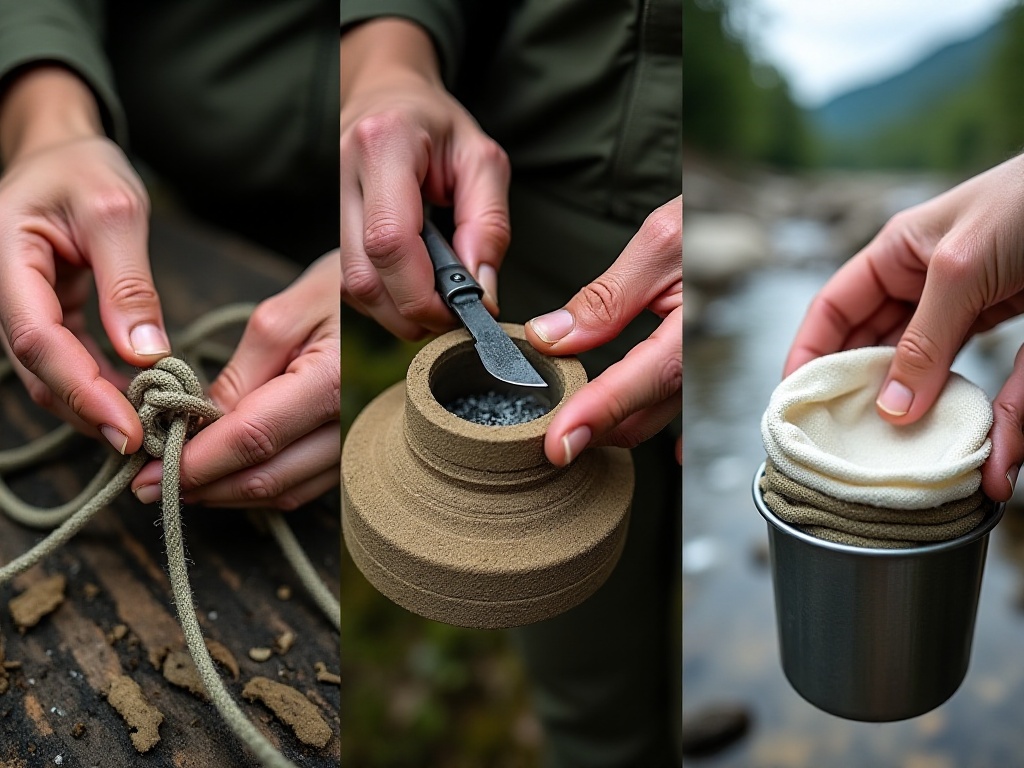
Shelter
When it comes to the most crucial part of wilderness survival, it's definitely finding or building a shelter. Many people might think hunger is the scariest thing, but actually hypothermia is the most dangerous in the wild. Statistics show that 65% of wilderness casualties die from hypothermia, not hunger or dehydration.
There are two ways to find shelter: either find an existing one or build your own. If you can find a cave or a hollow under a large tree, that's ideal. But if you can't, don't panic, I'll teach you a simple and practical method.
That time, I made a simple frame connector using a mineral water bottle I had with me. Specifically, cut the bottle horizontally and use it to secure wooden poles. Then drape your blanket or raincoat over it, and in 15 minutes you can set up a decent temporary shelter. Though not perfect, it at least provides protection from wind and rain.
Choosing a shelter location is also crucial. First, choose relatively high ground, because flash floods come extremely quickly, leaving no time to react. I've seen too many people camp in valleys for convenience, which is very dangerous behavior. Also pay attention to ventilation, especially when using open flames, to ensure air circulation and prevent carbon monoxide poisoning.
Here's a technique many people don't know: if you're in snow, you can dig a snow cave. Though snow caves look cold, they actually provide good insulation. Snow is a good insulator that can block outside cold. But note that the top of the snow cave should be dome-shaped to prevent collapse.
During rainy seasons, it's recommended to dig a simple drainage ditch around your shelter to prevent water from flowing in. The ground should be covered with branches or dry grass to insulate from ground cold. That time, I laid out all the clothes from my backpack on the ground - though not very comfortable, at least I wasn't lying directly on the cold ground.
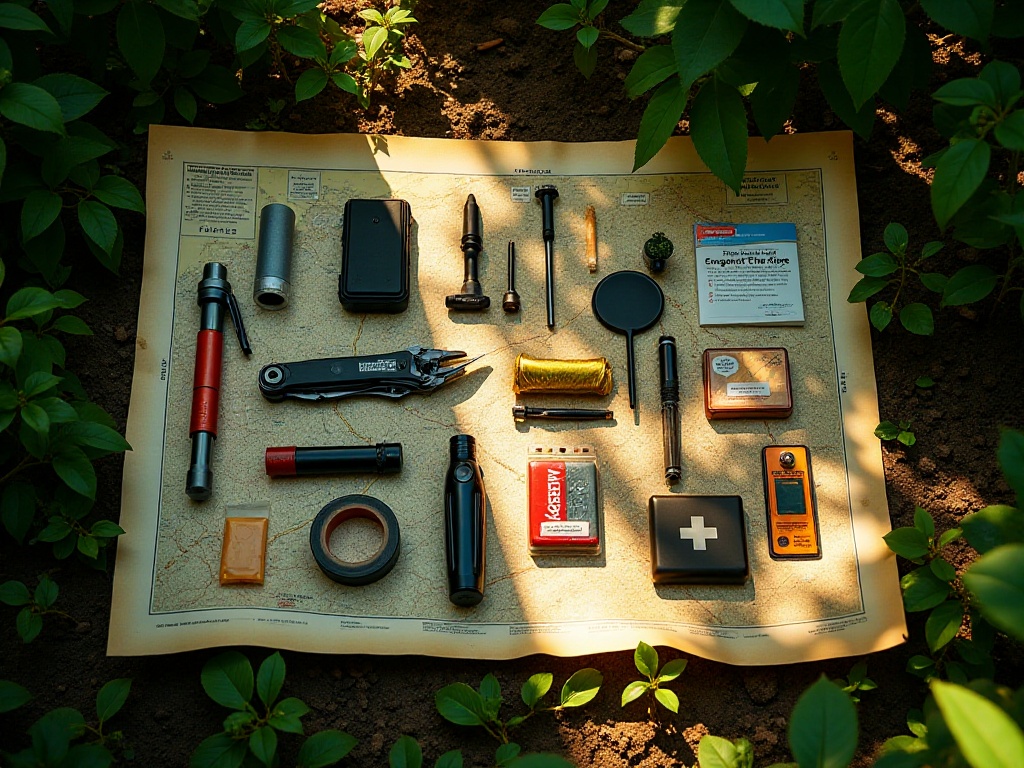
Water
In the wilderness, water is much more important than food. People can survive three weeks without food, but only three days without water. So finding water sources is top priority.
There are many techniques for finding water sources. First, observe bird flight patterns, as they often go to water sources to drink in early morning and evening. Also look at moss growth direction, as moss usually grows more abundantly in damp places. Insects are also a good indicator, as they generally stay active near water sources.
In the morning, you can collect dew from leaves. That time, I put plastic bags over tree branches to collect falling dew for drinking. Though not much, it really helps quench thirst.
After finding water sources, purification is extremely important. The simplest method is solar disinfection. Put water in a transparent container and expose it to sunlight for 6 hours, which kills 99.9% of harmful bacteria. On cloudy days, it needs two days. Though time-consuming, this method is simple and safe.
Another tip is filtering through fabric. Pour water through several layers of T-shirt or other clean fabric to remove most impurities. If you have activated carbon, it works even better. Activated carbon can absorb harmful substances in water, and it's lightweight, so I recommend carrying some pieces.
If you really can't find water sources, you can dig a water collection pit. Dig a hole in a damp place, put a container at the bottom, cover the hole with plastic sheet, and place a small stone in the center of the sheet. Water will condense on the plastic and drip into the container at the lowest point. Though this method doesn't produce much water, it's an option when there are no alternatives.
Fire Making
Many people might not know that Doritos corn chips are actually super good fire starters. They contain oil and burn long enough to give you sufficient time to add larger firewood. This is a little trick I discovered by accident.
Making fire in humid conditions is especially difficult but also especially important. Research shows that for every 1°C drop in body temperature, a person's mobility decreases by 10%. So now I always carry waterproof fire-starting tools when heading out, like waterproof matches or lighters, preferably both.
When making fire, pay attention to collecting dry tinder. Tree bark and dry grass are good choices. Pine bark is especially good as it contains resin and burns easily. If it's raining, look for dead branches under large trees, as the canopy usually blocks some rain, keeping branches underneath relatively dry.
Another technique is to set the lighter flame to maximum, making it easier to ignite damp tinder. If you have alcohol wipes, they work even better. Alcohol wipes are lightweight, take up little space, but are very useful for starting fires.
Fire arrangement is also important. I usually arrange firewood in a pyramid shape, which provides good air circulation and stable fire. If staying overnight, prepare more firewood to avoid running out in the middle of the night. Stay alert while sleeping, don't let the fire get too big, and watch out for sparks flying onto the tent.
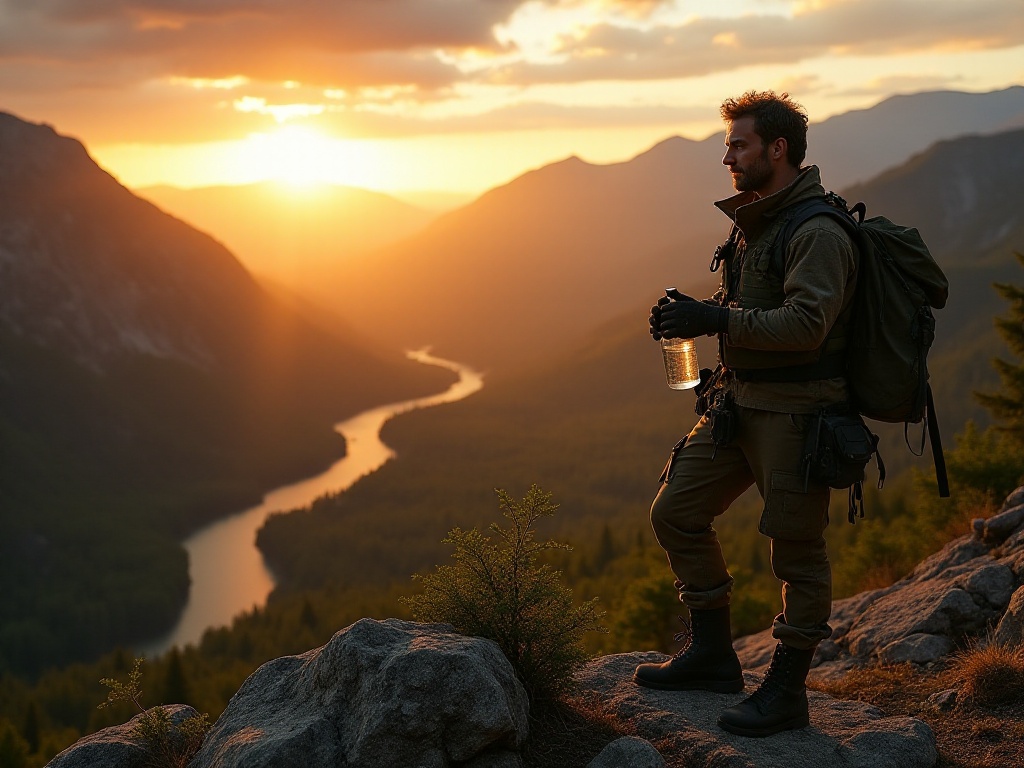
Rescue
Remember one principle when seeking help: any signal in sets of three is an international distress signal. For example, three consecutive whistle blows or three shouts.
If using fire for rescue, best to make three bonfires arranged in a triangle. This way rescue personnel can see it from the air. If using flashlight at night, flash three times, pause, then flash three more times.
Now many people might say, don't we have phones? But in the wilderness, phone signals are often unstable. That time, I had no signal and was eventually rescued through these traditional rescue methods. So these basic rescue skills must be mastered.
Another important point is, if you realize you're lost, it's best to stay put and wait for rescue. Many people like to keep walking while looking for the way, but end up going further astray. That time, I initially wandered around, which resulted in rescue personnel taking much longer to find me.
If you decide to move, be sure to leave marks along the way. You can arrange stones into arrows or make marks on tree trunks. This way, even if you can't find the way, you can return along your path. Plus these marks can help rescue personnel find you.
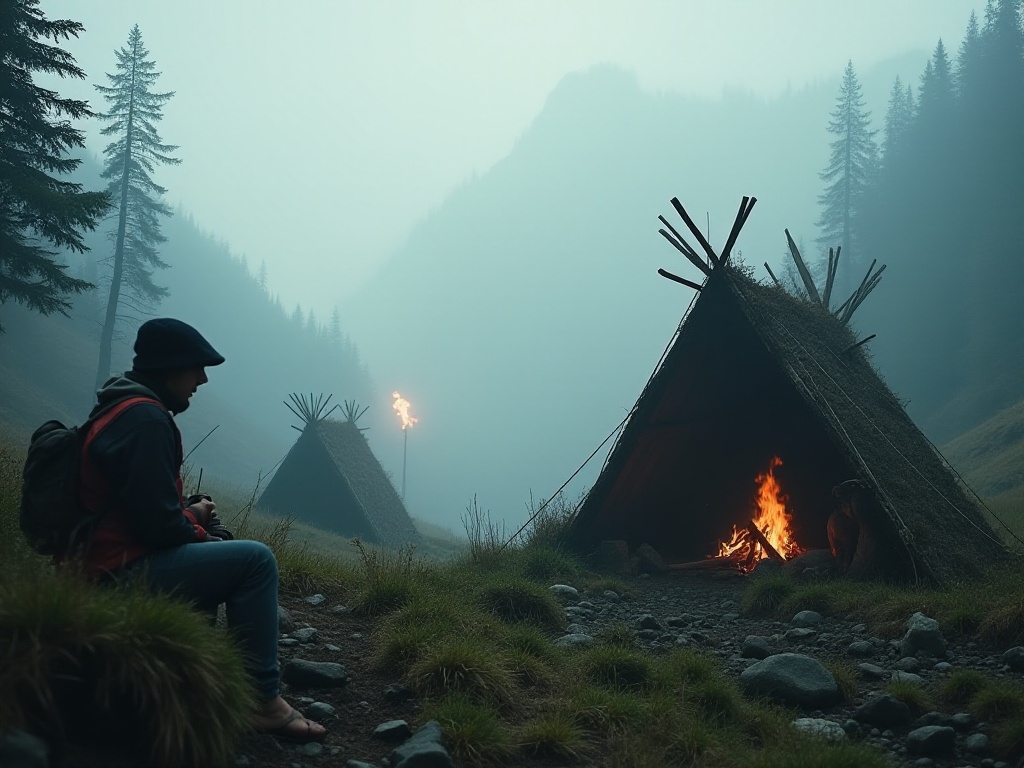
Conclusion
After experiencing that accident, I gained a deeper understanding of wilderness survival. Actually, as long as you master the correct methods and maintain a calm mindset, most dangerous situations can be resolved.
Now I make thorough preparations before each trip, not because I'm overly worried, but to give myself an extra layer of protection. These skills are like an insurance policy - you might not need them usually, but they can really save your life when critical moments arrive.
If you also enjoy outdoor activities, consider noting down these suggestions. You never know when they might come in handy. After all, being prepared is never wrong.
By the way, do you have any wilderness survival experiences to share? Welcome to tell me in the comments.
Related articles


